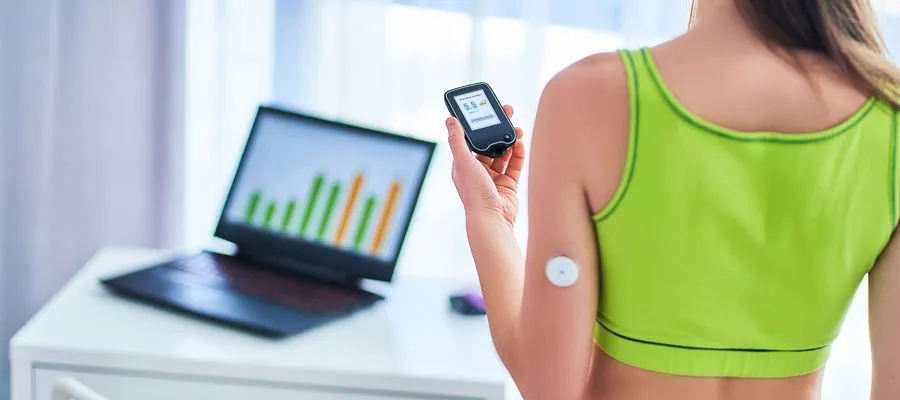Glucometer without finger pricks
Lifestyle illnesses have become more prevalent as a result of an increase in sedentary behaviour. Type 2 diabetes is the most typical of them. Monitoring one’s blood glucose levels continuously is one of the most important aspects of controlling this condition. This entails tracking blood sugar levels and checking them numerous times each day.
The majority of instruments for measuring blood sugar levels need many fingers pricks every day. Either the blood sample will be taken, or the gadget will be calibrated. This continual finger-pricking turns out to be quite a discouraging element because the majority of people have no idea how to screen for diabetes without blood testing. Its accompanying discomfort serves as a barrier to continuing accurate documentation on blood sugar levels.
The development of finger-free blood sugar testing devices in such a situation proves to be a welcome improvement. Testing for blood sugar using non-invasive techniques makes controlling diabetes comparably painless.
Diabetes Checking Methods Without a Blood Test
It could be necessary to do a blood test in order to diagnose diabetes. Once diagnosed, blood glucose levels must be monitored often and regularly. In such cases, it is feasible to non-invasively assess blood sugar levels. Learn more about how new, non-invasive gadgets work to diagnose diabetes without the use of blood testing.
How they operate
Continuous Glucose monitors (CGMs) assess the level of glucose in the blood using small sensors. With the use of adhesive tape, the sensor is applied directly beneath the skin. It continuously measures the level of blood glucose with in interstitium (fluid under the skin). Using a transmitter, the data may be sent to a cell phone or other device. After that, downloading the CGM data is simple. Additionally, CGMs may be set up to sound warnings when blood sugar levels were high or too low.
Benefits
- It is a ground-breaking, non-invasive method that does away with the requirement for frequent finger pricking to check blood glucose levels.
- A great technique to prevent fewer medical emergencies is through high and low sugar alarms.
- It is simple to get the data and create patterns. This makes it simple to create individualised nutrition, medicine, and exercise programmes for the person.
- Approximately every five minutes, glucose levels are measured, which provides a clearer picture of the illness and how to control it.
Drawbacks
- Getting used to using CGMs takes some time.
- Every seven to fourteen days, the sensors must be replaced. Because sensors are often removed and reinserted, scars may develop on the skin.
- It costs a little more than glucose metres.
- It could be psychologically difficult to process the constant flood of data and measurements.
- The technology has not yet been fully developed to provide readings with 100% accuracy.
- Sometimes, it may take a half-hour longer for CGMs to notice a sharp increase in blood glucose contents.
How they operate
The To the lobes of the ears is a sensors. The blood sugar values are sent wirelessly to your smartphone using a combination of physiological characteristics including ultrasonic, electromagnetic, and thermal technologies.
- Accuracy: It’s a good idea to verify the readings’ veracity.
- Alerts and alarm systems: The CGM should be equipped with a dependable alarm system to alert patients to impending hypoglycemia and hyperglycemia.
- Data transfer should be simple between devices connected to a wireless network. This includes the readings.
- Usability convenience – The gadget shouldn’t be too difficult to use.
- Cost – It ought to be reasonable and cost-efficient.
- Due to the sensors & adhesives used in glucose monitors, it is important to check for allergic responses on the skin.
- Medical insurance is a form of insurance The use of the glucose monitor has to be approved by the company. Therefore, before moving on, one must confirm approval.
- Before deciding on a device, look for additional characteristics such a large display, water resistance, smart notifications, data retrieval choices, and compactness.
- Federal agency approval – Organizations like the FDA must approve the gadget before it may be used.
